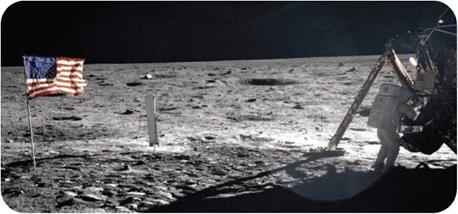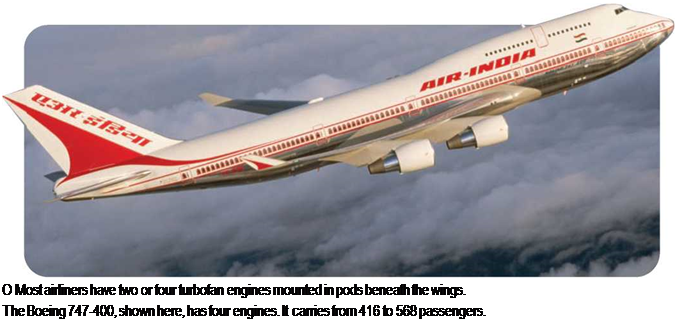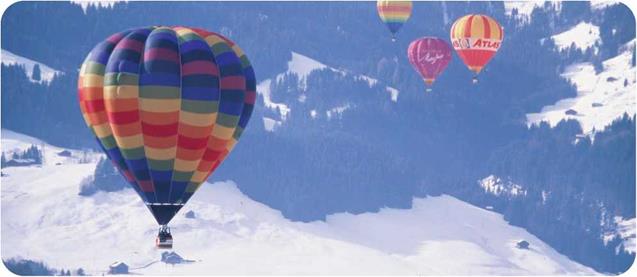Date of birth: August 5, 1930.
Place of birth: Wapakoneta, Ohio.
Major contributions: First person to pilot the docking of two space vehicles; first person to set foot on the Moon. Awards: Presidential Medal of Freedom; Congressional Space Medal of Honor; NASA Distinguished Service Medal; Royal Geographic Society Gold Medal; Federation Aeronautique Internationale Gold Space Medal; and many more honors, awards, and honorary degrees.
orn on a farm in rural Ohio, Neil Armstrong took his first airplane flight at age six. He quickly became interested in aviation. Armstrong spent many hours of his childhood building model planes and reading books about flying. He started flying lessons at age fourteen and earned his pilot’s license two years later.
After graduating from high school, Armstrong began studying aeronautical engineering at Purdue University in Indiana. He interrupted his studies to serve in the U. S. Navy from 1949 to 1952. During that time Armstrong flew as a fighter pilot in the Korean War and earned two Gold Stars. After his service in the Navy ended, Armstrong became a civilian again. He graduated from Purdue and became a test pilot for the government. From 1955 to 1962, Armstrong flew more than 1,100 hours, testing many different kinds of aircraft.
In September 1962, Armstrong joined the National Aeronautical and Space Administration (NASA) as an astronaut. He was one of the few civilian astronauts. In 1966 Armstrong made history on his first space mission, Gemini 8, when he became the first person to maneuver one spacecraft to dock with another in space.
Early in 1969, Armstrong was named as commander and pilot of the Apollo 11 mission that aimed to take the first people to the Moon. Also on the crew were Buzz Aldrin and Michael Collins, both experienced astronauts.
On July 16, 1969, the trio blasted off from Florida. A few days later, they
 entered orbit around the Moon. Armstrong and Aldrin climbed into the lunar landing craft, the Eagle. Collins remained in orbit aboard the command module, Columbia. The two craft separated, and Aldrin piloted the Eagle down to the Moon’s surface. Shortly after 4:00 p. m. on July 20, the landing craft touched down. Armstrong announced by radio, “The Eagle has landed.”
entered orbit around the Moon. Armstrong and Aldrin climbed into the lunar landing craft, the Eagle. Collins remained in orbit aboard the command module, Columbia. The two craft separated, and Aldrin piloted the Eagle down to the Moon’s surface. Shortly after 4:00 p. m. on July 20, the landing craft touched down. Armstrong announced by radio, “The Eagle has landed.”
For the next six and a half hours, the two astronauts prepared for their historic walk on the Moon’s surface. Just before 11:00 p. m., Armstrong stepped down the ladder onto the Moon’s surface. As he did so, he said, “That’s one small step for man, one giant leap for mankind.” A camera on the side of the spacecraft displayed the historic step to millions of people around the world watching on television.
Armstrong and Aldrin took some rock samples, set up some experiments, and placed a U. S. flag on the Moon. Fired by rockets, the ascent stage of the lunar module took the astronauts safely back to the Columbia on July 21. The next day, they began the return trip to
О Most of the photos from the Apollo 11 mission were of Buzz Aldrin taken by Neil Armstrong. This is one of the few clear photographs of Armstrong, showing him next to the modular equipment storage assembly of the Eagle.
Earth. Columbia splashed down in the Pacific Ocean on July 24.
Officials worried that the astronauts might bring back some unknown space germs with them. Armstrong, Aldrin, and Collins were held in isolation for more than two weeks. When finally released, they were celebrated in cities across the United States and in many countries around the world.
From 1970 to 1971, Armstrong served NASA in an administrative job. He then resigned and became a professor of aerospace engineering at the University of Cincinnati in Ohio until 1979. Later Armstrong worked for companies in the aerospace industry. Armstrong also helped lead the commission that investigated the fatal loss of the Space Shuttle Challenger shortly after takeoff on January 28, 1986.
N
SEE ALSO:
• Apollo Program • Astronaut
• Challenger and Columbia • NASA
• Spaceflight
_____________________________________________ J














 entered orbit around the Moon. Armstrong and Aldrin climbed into the lunar landing craft, the Eagle. Collins remained in orbit aboard the command module, Columbia. The two craft separated, and Aldrin piloted the Eagle down to the Moon’s surface. Shortly after 4:00 p. m. on July 20, the landing craft touched down. Armstrong announced by radio, “The Eagle has landed.”
entered orbit around the Moon. Armstrong and Aldrin climbed into the lunar landing craft, the Eagle. Collins remained in orbit aboard the command module, Columbia. The two craft separated, and Aldrin piloted the Eagle down to the Moon’s surface. Shortly after 4:00 p. m. on July 20, the landing craft touched down. Armstrong announced by radio, “The Eagle has landed.”
